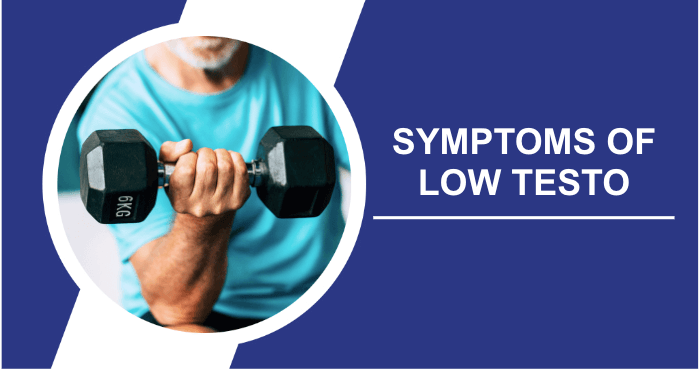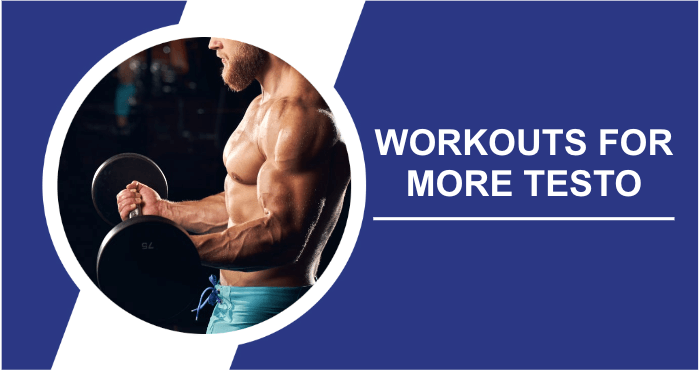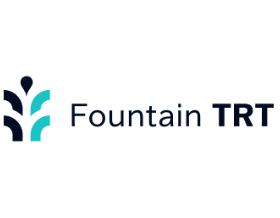There are few experiences in life more rewarding than engaging in a rigorous workout, knowing that you are simultaneously improving your well-being and promoting substantial muscle growth. Oh, and did we mention that it also boosts your testosterone levels? Talk about efficient! When you exercise, you improve your body composition.
In addition, exercise helps to naturally increase your testosterone levels, which helps to maintain and increase the muscle mass you are so eager to achieve. We understand your eagerness to learn more, so let’s dive right in. We are on the verge of elucidating how exercise contributes to an increase in testosterone, along with identifying which specific exercises and training routines are most beneficial for enhancing testosterone production.
Does Working Out Increase Testosterone Levels? Many studies suggest that regular exercise, especially weight training and high-intensity exercise, can temporarily boost testosterone levels. Physical activity can help your body produce more of this essential hormone, which plays a crucial role in muscle growth, energy levels, and overall well-being.
However, the increase in testosterone is usually short-term, and levels may return to baseline after a few hours. To maintain higher testosterone levels, it's important to maintain a consistent exercise routine, combined with a balanced diet and adequate sleep. Always consult a healthcare professional for personalized advice.
What Are Hormones?
Hormones are like the silent messengers of the body, orchestrating a complex symphony of functions behind the scenes. These chemical messengers are produced by various glands in our bodies, including the pituitary, thyroid, and adrenal glands. They play a vital role in regulating everything from our mood and metabolism to growth and reproduction.
Think of them as tiny messengers that deliver important instructions to our cells, telling them when to speed up or slow down. Hormones are the invisible conductors of our body’s orchestra, making sure all the instruments play in harmony to keep us healthy and functioning at our best.
What Exactly Are Androgens?
Androgens, often referred to as the body’s “male hormones,” are like the backstage crew of our physiology. These steroid hormones, primarily testosterone, have a significant impact on both men and women, although they are typically associated with masculine traits such as facial hair, deep voices, and muscle development.
But their role goes beyond that – androgens help regulate bone density, mood, and even play a role in the libido department. Think of them as the power players in the hormone ensemble, responsible for shaping our physical and emotional characteristics, while also causing the occasional bit of hormonal drama when their levels fluctuate.
What Is Testosterone?
Testosterone, a sex hormone derived from the gonads, is the primary and most important androgen responsible for the development of male characteristics. Testosterone is primarily associated with muscle growth, but its importance spans all stages of life, including fetal development, adolescence, and adulthood.
- Accurate testosterone measurement
- Appointment with a doctor
- Cream and injection options
- Price: $35 – $199
- Rating ⭐⭐⭐⭐⭐
What Is The Function Of Testosterone?
Testosterone plays a critical role in physical maturation, beginning during fetal development and continuing through puberty. Testosterone controls height, body and pubic hair growth, deepening of the voice, increased libido, and enlargement of the reproductive organs. As you enter adulthood, testosterone levels gradually decline, but it continues to play an indispensable role. It remains essential for sperm production and maintaining sexual desire.
Its importance goes even further. Testosterone also serves as a signaling agent for the production of fresh red blood cells, supports muscle and skeletal strength, influences body composition, and enhances overall well-being. Increased testosterone levels lead to increased muscle mass, strength, endurance, and recovery, among many other benefits. Pretty amazing, isn’t it?
How Is Testosterone Made In The Body?
Testosterone is primarily produced in the gonads, the central reproductive organs. In men, the testes are the primary site of testosterone production, while in women, the ovaries produce smaller amounts of the hormone.
Another mechanism for testosterone synthesis involves the hormone dehydroepiandrosterone (DHEA), which is produced by the adrenal glands and subsequently converted into small amounts of testosterone. The body regulates testosterone production by inhibiting the release of gonadotropin-releasing hormone to maintain normal testosterone levels.
What Leads To Low Testosterone Levels?
Low testosterone production is medically referred to as male hypogonadism, which is categorized into two main types. Primary hypogonadism occurs when a testicular disorder hampers testosterone production, while issues with the hypothalamus or pituitary gland result in secondary hypogonadism.
Common causes of primary hypogonadism encompass congenital diseases and acquired conditions such as testicular injuries, chemotherapy, or the use of anabolic steroids. Secondary hypogonadism may stem from congenital diseases, head or brain injuries, obesity, alcohol misuse, drug consumption, certain medications, high stress levels, and inadequate sleep.
Symptoms Of Low Testosterone

Want to know how to spot the signs of low testosterone? Keep an eye out for these indicators:
- Decreased sex drive: A decreased libido often correlates with low testosterone levels because this hormone affects sexual desire.
- Erectile dysfunction (ED): While ED can be caused by a variety of factors, low testosterone is one of the potential causes of this condition.
- Loss of muscle mass: Testosterone plays a key role in muscle growth, development and density. If you notice a decrease in muscle mass or strength, it may be related to low testosterone levels.
- Increased body fat: Low testosterone levels can lead to an accumulation of body fat, starting a cycle as obesity can also contribute to low T levels.
- Decreased energy/fatigue: Fatigue is a common symptom of low testosterone, especially in younger people. Testosterone significantly affects energy levels, so reduced levels can lead to decreased vitality.
- Decreased body hair: While genetic factors primarily determine hair loss on the head, a reduction in body hair is an indication of low testosterone. Commonly affected areas include the shins, armpits, facial hair, and pubic region.
- Depression/brain fog: Testosterone plays an important role in mood and overall well-being. It also affects concentration, so depression and cognitive fog are common when testosterone levels decline.
If you are concerned about low testosterone levels, especially if you are over the age of 35 (as research suggests that testosterone levels are lower in this age group compared to previous generations), consider undergoing an evaluation with an online testosterone therapy for peace of mind.
Even if you are largely asymptomatic, addressing potential low testosterone is critical to improving your health and well-being. Online TRT assessments are cost effective, efficient, convenient and private. We highly recommend Fountain TRT for your low T evaluation.
Does Exercising Increase Testosterone?
Yes, regular exercise can increase testosterone levels. Numerous studies have confirmed that exercise, particularly resistance training or high-intensity exercise, has the potential to increase testosterone levels.
One study found that exercise contributes to higher serum testosterone concentrations, although the magnitude of this increase may vary depending on factors such as body weight, age, time of day, and exercise intensity. Researchers also noted that the magnitude of this hormonal change tends to be less in older men or those who are overweight.
How Does Exercise Increase Testosterone?
Numerous studies have uncovered various mechanisms by which exercise increases testosterone levels, with exercise volume and intensity playing a critical role in this natural increase. A 2016 study found that prioritizing compound exercises, which engage large muscle groups, during resistance training before moving on to smaller muscle groups resulted in a more substantial anabolic response than the reverse order.
Performing compound movements such as bench presses, squats, and deadlifts induces testosterone increases due to the significant stress they place on muscle fibers. This stress triggers the release of testosterone and growth hormone, which aids in muscle repair and growth. In addition, research has shown that high-intensity workouts with higher weightlifting volumes can effectively increase testosterone levels.
In addition, high-intensity interval training (HIIT) has been shown to increase testosterone levels, especially in men. HIIT involves short bouts of high-intensity activity followed by short periods of rest. One study showed that 90-second intervals of high-intensity treadmill running, alternating with 90-second periods of rest, significantly increased testosterone levels compared to 45 minutes of endurance training.
Other studies have confirmed these findings, attributing the testosterone increase to the “fight-or-flight” response triggered by the high-intensity bursts of HIIT. Exercise also helps reduce body fat, which leads to higher testosterone levels. In addition, regular exercise helps reduce stress, which is beneficial since stress can lead to lower testosterone levels.
Is There An Optimal Time To Exercise For Increased Testosterone Levels?
The timing of your workouts in relation to testosterone levels is a nuanced issue. Testosterone levels tend to peak in the morning and decline in the afternoon. Although there is no definitive research to confirm this, some suggest that morning workouts may be beneficial due to higher morning testosterone levels. This could potentially lead to improved strength and increased energy as you capitalize on the elevated testosterone levels.
On the other hand, studies have suggested that evening strength training sessions may have a more pronounced effect on testosterone levels. In the absence of a definitive answer, consistency in your exercise routine is paramount. Ultimately, the most important factor is choosing a workout time that works with your schedule and ensures that you stay committed. Consistency in your fitness program is key to achieving your goals, regardless of the time of day you choose to exercise.
What Types Of Exercise Are Most Effective For Increasing Testosterone Levels?
As mentioned earlier, the two main categories of exercise that excel at boosting testosterone levels are resistance training (weight lifting) and HIIT (high-intensity interval training). Resistance training, which includes strength training and weightlifting, contributes to an increase in serum testosterone levels. Scientific research shows that multi-joint compound exercises produce the most significant increase in testosterone production.
Exercises such as squats, deadlifts, and bench presses engage several major muscle groups, resulting in increased serum testosterone concentrations. Studies also show that the use of free weights results in a greater increase in testosterone than machine weight training. This phenomenon is likely due to the activation of the core and larger muscle groups when using free weights.
For optimal results, these workouts should be performed at high intensity, aiming for maximum volume within a 45-minute to one-hour time frame. It is recommended to use heavier weights rather than focusing on high repetition, low weight sets. In addition, it is advisable to minimize rest periods between sets to maximize the intensity of the workout.
In addition to resistance training, another highly effective exercise method for increasing testosterone levels is HIIT. A study was conducted to investigate the effects of exercise intensity by performing ergometer cycling at high, moderate, and low intensities. Significant increases in testosterone were only observed in the high intensity group.
The researchers concluded that when the number of repetitions remains constant, exercise intensity plays a critical role in increasing serum testosterone production. The body produces more testosterone in response to exercise intensity. Common exercises used in HIIT training include the stairmaster, treadmill, and burpees. For inspiration, check out these HIIT treadmill workouts.
Interestingly, while HIIT has been shown to be highly effective in increasing testosterone levels in men, it has been found to decrease testosterone levels in women. It is important to be aware of the potential for overtraining. High-intensity training requires proper rest and nutrition for complete recovery.
Overtraining can actually reduce testosterone levels by increasing the stress hormone cortisol. Signs of overtraining include excessive soreness, difficulty recovering from exercise, disrupted sleep patterns, and a decrease in strength and performance.
- Accurate testosterone measurement
- Appointment with a doctor
- Cream and injection options
- Price: $35 – $199
- Rating ⭐⭐⭐⭐⭐
How Long Does The Post Workout Testosterone Boost Last?
Unfortunately, the testosterone boost experienced after a workout typically lasts for about an hour. Individuals who are younger and new to weightlifting tend to experience a greater increase because their hormonal responses have not yet adjusted to these changes.
Is The Increase In Testosterone Significant Enough To Cause A Noticeable Change?
The increase in testosterone after exercise is significant enough to be noticeable, but it does not produce dramatic or lasting effects. Although more research is needed in this area, it is unlikely to make a significant difference for individuals struggling with low testosterone levels. Younger individuals are more likely to notice these changes due to their higher baseline hormone levels.
While you may notice a slight boost in energy or an improved overall mood after exercising, the true transformation lies in the long-term effects. Consistent exercise and high-intensity training will result in increased lean muscle mass and fat reduction, which will ultimately lead to increased testosterone levels.
Alternative Ways To Increase Testosterone
While a consistent exercise routine is crucial to boosting testosterone, there are other lifestyle changes that can lead to increased levels. Some methods of increasing testosterone include maintaining a healthy body weight, abstaining from drugs and alcohol, maintaining a regular sleep schedule, and eating a nutritious diet. A well-balanced diet is essential for maintaining optimal hormone levels, and certain foods can actually increase testosterone levels.
Such foods include eggs, tuna, beef, oysters, legumes, garlic, and leafy greens. In addition, if additional support is deemed necessary, testosterone boosters or testosterone replacement therapy (TRT) may prove beneficial. Research has shown the effectiveness of testosterone boosters in increasing testosterone levels, and in cases of severe testosterone deficiency, a doctor may prescribe TRT.
What Do Testosterone Boosters Do?
Testosterone boosters come in a variety of forms with different ingredients and dosages, but they share a common goal: to increase the levels of free testosterone in your body. There are several mechanisms by which these boosters accomplish their goal. Some help the body increase its natural production of testosterone, while others work to slow the breakdown of existing testosterone.
Some products, such as DHEA (dehydroepiandrosterone), use synthetic hormones or other compounds to stimulate testosterone production. When a testosterone booster targets DHEA, a natural hormone found in the adrenal gland responsible for producing androgens and estrogens, it indirectly helps to increase testosterone levels in your body.
What Natural Remedies Increase Testosterone Levels?
Boosting testosterone levels naturally is like giving your body a gentle nudge in the right direction. Incorporating regular exercise, especially strength training, into your routine can help boost testosterone production. A balanced diet rich in nutrients such as zinc, vitamin D, and omega-3 fatty acids supports hormonal health.
Don’t underestimate the power of a good night’s sleep; quality rest is crucial for hormone regulation. Managing stress through practices like meditation and yoga can also have a positive impact. And of course, maintaining a healthy weight and limiting alcohol and sugar intake can help keep testosterone levels in check. These natural remedies work together to keep your hormones in balance and help you feel your best.
Frequently Asked Questions
Is it possible for regular exercise to actually increase testosterone levels?
Absolutely, regular exercise has the potential to increase testosterone levels, although the magnitude of this increase can be influenced by a number of factors.
What types of physical activity are most effective in increasing testosterone levels?
Compound exercises such as squats, deadlifts, and bench presses tend to be more effective at increasing testosterone levels than isolation exercises.
How long can I expect to see an increase in testosterone levels after starting a fitness program?
This timeframe can vary from person to person, but some studies suggest that a noticeable change in testosterone levels can be seen after a few weeks of consistent exercise.
Does the intensity of my training play a role in testosterone elevation?
In fact, high-intensity exercise, such as high-intensity interval training (HIIT) or lifting heavy weights, is more likely to result in elevated testosterone levels than low-intensity exercise.
Can overtraining negatively affect testosterone levels?
Yes, excessive exercise or overtraining can potentially lead to decreased testosterone levels and other hormonal imbalances.
Conclusion
Numerous studies have shown that regular exercise can indeed lead to an increase in testosterone levels, although the degree of increase depends on several factors. The variability in testosterone levels can be attributed to factors such as age, current body composition, the type of exercise performed, and the timing of exercise sessions.
The most effective exercise approaches for increasing testosterone levels in men include resistance training and high-intensity interval training (HIIT). In addition, there are alternative methods, including a balanced and nutritious diet, that can naturally increase testosterone production. It is advisable to explore all available options to determine the most appropriate method or combination of methods to meet your goals and preferences.
Sources
- Cleveland Clinic. “Testosterone: What It Is, Function & Levels.” Read more
- Cleveland Clinic. “Why Are Testosterone Levels Declining?” Published September 20, 2022. Read more
- UCSF Department of Urology. “Hypogonadism (low testosterone).” Read more
- Riachy, Ruba, et al. “Various Factors May Modulate the Effect of Exercise on Testosterone Levels in Men.” Journal of Functional Morphology and Kinesiology, vol. 5, no. 4, 7 Nov. 2020. Read more
- Sheikholeslami-Vatani, Dariush, et al. “Comparison of the Effects of Resistance Exercise Orders on Number of Repetitions, Serum IGF-1, Testosterone and Cortisol Levels in Normal-Weight and Obese Men.” Asian Journal of Sports Medicine, vol. 7, no. 1, 1 Mar. 2016. Read more
- Hackney, A. C., et al. “Testosterone Responses to Intensive Interval versus Steady-State Endurance Exercise.” Journal of Endocrinological Investigation, vol. 35, no. 11, 1 Dec. 2012. Read more
- Metcalf, Eric, and MPH. “Does Working Out Lift Men’s Testosterone Levels?” WebMD. Read more
Jayson Peterson is an experienced pharmacist, naturopathic physician, medical examiner, and minister. After earning his Doctor of Pharmacy degree from the Medical University of South Carolina, Jayson Peterson completed clinical rotations at several prestigious healthcare institutions and has been affiliated with several pharmacy chains throughout his career. His main passion and zeal is focused on providing world-class patient care by giving precise details and thorough instructions to those who need it most.


